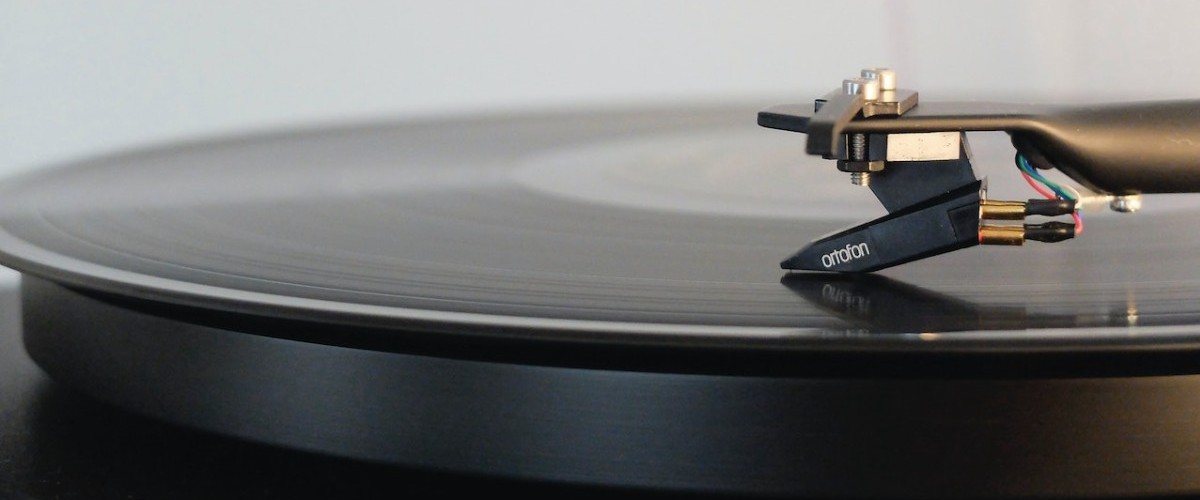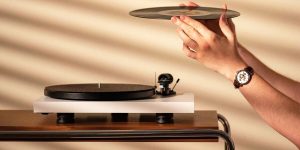As vinyl sales continue to grow, more people are interested in record players. And, as with any piece of audio equipment, the quality of your sound will depend largely on the quality of your components.
So, if you’re looking to get the best sound possible from your record player, should you use the built-in phono preamp or an external one? This blog post will look at each option’s pros and cons and help you decide which is best for you.
What is a built-in phono preamp
A phono preamp is a device that amplifies the signal from your turntable so that it can be played through speakers or headphones. Many record players have a built-in phono preamp, which means you don’t need to buy one separately. However, the quality of these built-in preamps can vary greatly, so it’s worth researching to see if the preamp in your record player is up to scratch.

What is an external phono preamp
An external phono preamp is a standalone device that you connect to your turntable with RCA cables. These preamps tend to be of higher quality than built-in ones, so they will usually give you a better sound. However, they are an additional cost on top of your record player, so you’ll need to decide if the extra expense is worth it for you.
Common things between built-in and external phono preamp
There are a few things that all phono preamps, whether built-in or external, will do.
- Firstly, they will amplify the signal from your turntable so that it can be played through speakers or headphones.
- Secondly, as the volume increases, so does the amount of distortion. So, all phono preamps will have some form of distortion-reduction circuitry to help keep your sound as clean as possible.
- Thirdly, they will all come with some form of gain control.
- And finally, they will convert the signal from your turntable into a digital format so that it can be stored on a computer or played back through a digital device.
Why external phono preamps are better than built-in and external phono preamps
Internal construction
One of the main differences between built-in and external phono preamps is the quality of their internal construction.
Built-in phono preamps are often mass-produced, which means they are not made to the same high standards as external ones. As a result, it can cause them to sound worse than external preamps and be more prone to breaking down.
External phono preamps, on the other hand, are usually made by specialist companies that focus on audio quality. They are constructed to a much higher standard and will usually sound better than built-in preamps.
Cost
Built-in preamps are usually much cheaper than their external counterparts, as they are often included as part of the record player itself and don’t need to be bought separately.
However, the trade-off is that they are usually lower quality than external preamps.
Equalization
Equalization is the process of adjusting the sound to make it more balanced. Built-in phono preamps often have a limited amount of equalization options, which means you might not be able to get the sound you want from your record player. External preamps usually have more comprehensive equalization controls, so you’ll be able to fine-tune the sound to suit your tastes.
Ease of use
Built-in phono preamps are often very easy to use, as the record player itself usually controls them. So you won’t need to fiddle around with extra controls or cables. External preamps can be a little more complicated to use, as you’ll need to connect them to your turntable using RCA cables. However, most external preamps come with clear instructions on how to use them.

Flexibility
Another advantage of external phono preamps is that they offer more flexibility than built-in ones. It is because you can usually connect them to any type of turntable, regardless of whether it has a built-in preamp or not.
You can upgrade your turntable at any time without having to replace the preamp as well.
Digital conversion
Finally, the last advantage of external phono preamps is how they convert the signal from your turntable into a digital format.
External phono preamps usually come with a built-in analog-to-digital converter (ADC). They can convert the signal from your turntable into a digital format, which can be stored on a computer or played back through a digital device. Unfortunately, built-in phono preamps often don’t have an ADC, so you’ll need to buy a separate one if you want to convert your turntable’s signal into digital.
However, if you’re looking for your record player’s best possible sound quality, you’ll need to use an external phono preamp with a high-quality digital converter. It will ensure that the signal from your turntable is converted into a digital format without any loss of quality.
The bottom line
If you’re looking for the best possible sound quality from your record player, you should use an external phono preamp. However, if you’re on a budget or want something that is more portable and easier to use, a built-in phono preamp might be a better choice. Ultimately, the decision comes down to personal preference and your own specific needs.
Whichever type of phono preamp you choose, make sure it is compatible with the type of turntable you have. Otherwise, you might not be able to get the sound quality you’re hoping for.
We are supported by our audience. When you purchase through links on our site, we may earn an affiliate commission at no extra cost to you.
Our newsletter
* We will never send you spam or share your email with third parties



![Best Turntables Under $100 [Reviewed and Tested]](https://righttechadvice.com/wp-content/uploads/2023/09/best-turntable-under-100-300x150.jpg)
![Best Turntables Under $300 [Reviewed and Tested]](https://righttechadvice.com/wp-content/uploads/2023/10/best-turntable-under-300-review-300x150.jpg)
![Best Record Players Under $200 [Reviewed and Tested]](https://righttechadvice.com/wp-content/uploads/2023/10/best-turntable-under-200-300x150.jpg)









